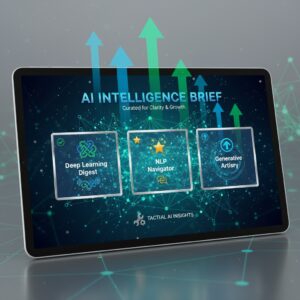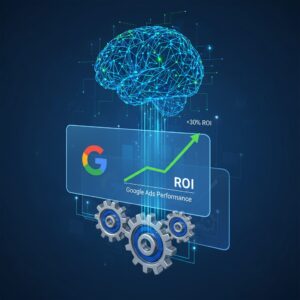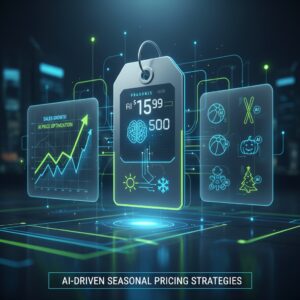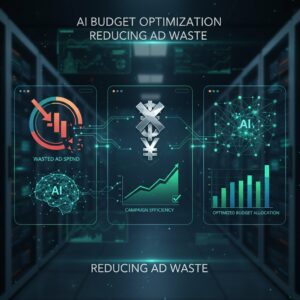
I’ve spent 20 years helping local businesses grow, and I can tell you that getting customers through your door has never been more challenging. The landscape changed dramatically over the past decade. Online shopping, delivery apps, and changing consumer habits made physical storefronts work harder for every customer.
But here’s what most business owners miss: AI technology now gives small businesses tools that were once available only to major retailers. You can use these tools today to bring more customers to your store without spending a fortune on marketing.
Let me show you exactly how this works.
Understanding AI-Powered Promotions
AI-powered promotions use machine learning to analyze customer behavior and automatically create targeted offers. Think of it as having a marketing expert who never sleeps, constantly studying your customers and adjusting your promotions in real time.
Traditional promotions follow a simple pattern. You create a discount, blast it to everyone on your email list, and hope some people show up. This approach wastes money because you’re offering the same deal to customers who would have visited anyway.
AI changes this completely.
The technology tracks when customers typically visit your business. It identifies patterns in their purchasing behavior. It recognizes which promotions actually drive new visits versus which ones just give discounts to people who were coming regardless.
I worked with a coffee shop owner in Portland last year. She was sending 20% off coupons to her entire email list every Monday. Her costs were high, but foot traffic barely moved. We implemented an AI system that analyzed her customer data from the past two years.
The results surprised her.
The AI discovered that Monday promotions didn’t increase visits. Most recipients were already planning to stop by. Instead, the system identified Thursday afternoons as the optimal time to send targeted offers to customers who hadn’t visited in two weeks. Within three months, her Thursday foot traffic increased by 34% while her promotion costs dropped by 18%.
Implementing Location-Based AI Triggers
Location-based triggers represent the most powerful AI tool for driving foot traffic. These systems send personalized offers to customers when they enter a specific geographic area near your business.
You set up a virtual boundary around your store. When someone who previously visited your business or expressed interest comes within that boundary, they receive a timely promotion on their phone.
The timing makes all the difference.
A customer walking past your store at 2 PM on Tuesday is far more valuable than someone sitting at home on their couch. They’re already mobile, already in your area, and potentially looking for something to do or buy.
I helped a bookstore owner in Austin implement this system six months ago. He created different promotions based on customer history. First-time visitors who browsed but didn’t buy received a 15% discount when they walked within two blocks of the store. Regular customers who hadn’t visited in 30 days got a notification about new arrivals in their favorite genres.
His foot traffic increased by 41% in the first quarter.
The system cost him $120 per month. He calculated that just four additional customers per day with an average purchase of $35 covered the entire cost. Everything beyond that was pure profit growth.
Setting up location-based triggers requires three steps.
First, you need a customer database with phone numbers and permission to send notifications. Most point-of-sale systems already collect this information. You just need to ensure customers opt in to receive messages.
Second, you define your geographic boundaries. Start with a quarter-mile radius around your store. You can adjust this based on your area’s characteristics and customer feedback.
Third, you create your promotion rules. Decide what offers go to which customer segments and under what conditions. The AI handles the rest automatically.
Personalizing Offers Through Purchase Pattern Analysis
Generic promotions waste money. Personalized offers based on actual purchase behavior generate results.
AI systems analyze every transaction to understand what each customer buys, when they buy it, and how much they typically spend. This data powers highly targeted promotions that feel relevant rather than random.
I recently consulted for a sporting goods store in Denver. The owner was frustrated because his email promotions generated minimal response. He was sending the same hiking gear promotions to everyone on his list, including customers who only bought basketball equipment.
We implemented an AI system that categorized customers based on their purchase history. The technology identified 12 distinct customer segments, from yoga enthusiasts to camping specialists to team sports players.
The owner started sending targeted promotions to each segment. Yoga customers received offers on new mat arrivals and apparel. Camping customers got notifications about seasonal gear and upcoming sales on tents or backpacks.
Response rates jumped from 3% to 17% within two months.
The AI also identified optimal discount levels for each segment. Some customers responded to 10% off while others needed 20% to change their behavior. The system tested different discount levels automatically and learned which offers generated the best return on investment for each customer type.
This approach does more than increase immediate foot traffic. It builds stronger customer relationships because people receive offers they actually want. You’re not spamming them with irrelevant deals.
Purchase pattern analysis also reveals product bundling opportunities. The AI might discover that customers who buy running shoes typically purchase socks and insoles within 30 days. You can automatically send a bundled offer to running shoe buyers, driving them back to your store for complementary items.
One restaurant owner I worked with used this approach to increase average ticket size. His AI system identified customers who ordered entrees but never desserts. When these customers came within his location trigger zone, they received a free dessert offer with any entree purchase. His dessert sales increased by 28%, and many customers who took advantage of the offer started ordering desserts regularly even without promotions.
The technology also prevents promotion fatigue. It recognizes when customers stop responding to offers and automatically reduces message frequency or tries different promotion types. This keeps your brand fresh and prevents customers from tuning out your messages.
You don’t need a huge budget to implement these systems. Several platforms now offer AI-powered promotion tools specifically designed for small businesses. Monthly costs typically range from $100 to $300, depending on your customer database size and feature requirements.
The return on investment usually appears within the first month. You need just a handful of additional daily customers to cover the cost and start generating profit.
Start by choosing one AI tool and implementing it fully before adding others. Many business owners make the mistake of trying to use every available feature at once. This creates confusion and prevents them from learning what actually works for their specific business.
Focus on location-based triggers first if you want immediate results. These generate the fastest return because they reach customers who are already nearby and mobile.
Add purchase pattern analysis next. This takes longer to show results because the AI needs time to analyze your customer data and identify meaningful patterns. But the long-term impact on customer loyalty and average transaction value makes it worth the wait.
Your competition is probably not using these tools yet. Most local business owners either don’t know they exist or assume they’re too complex or expensive. This gives you a significant advantage if you act now.
The businesses that thrive over the next decade will be those that adopt AI tools early and learn to use them effectively. The technology keeps improving, costs keep dropping, and customer expectations keep rising.
You can either lead this change or react to it after your competitors have already captured market share.
The choice is yours.
Please check our Business Tips https://thoughts.business/category/business-tips/
Please check our partner site – Why Invest? https://whyinvest.info/





